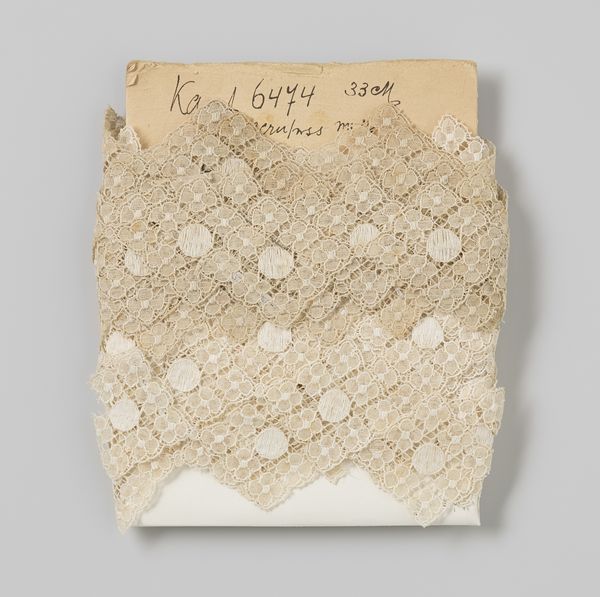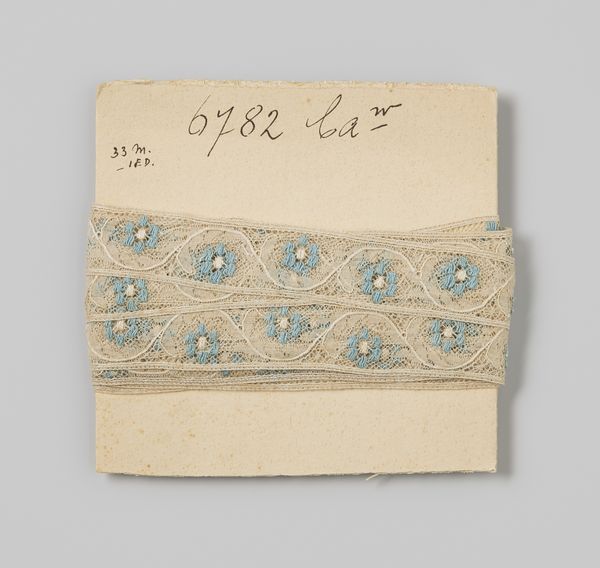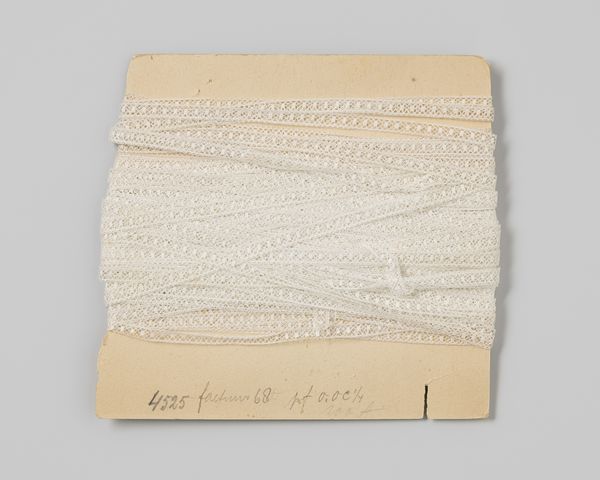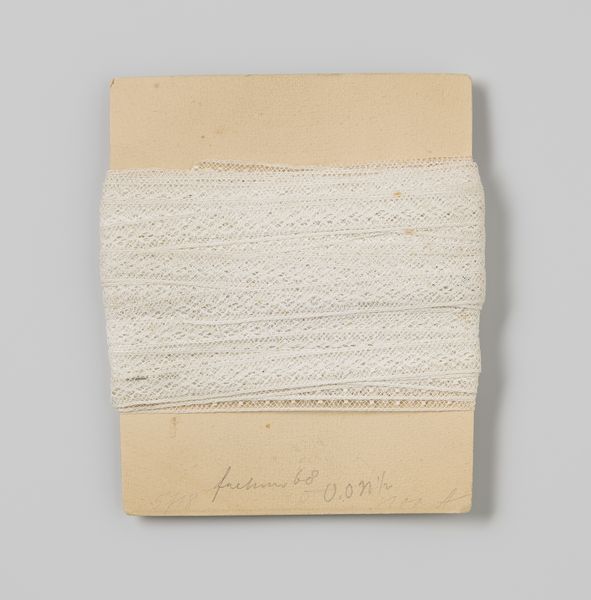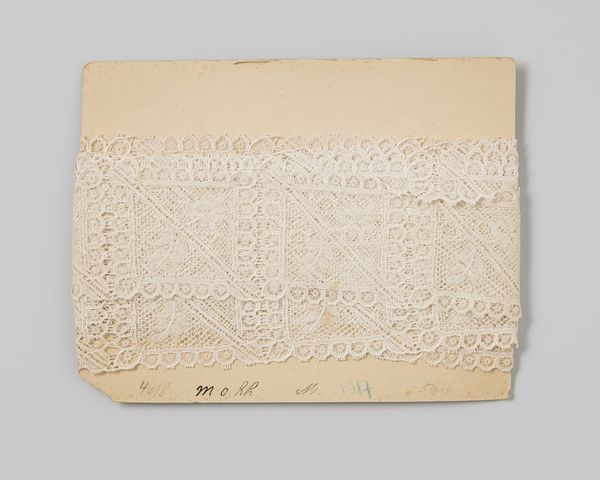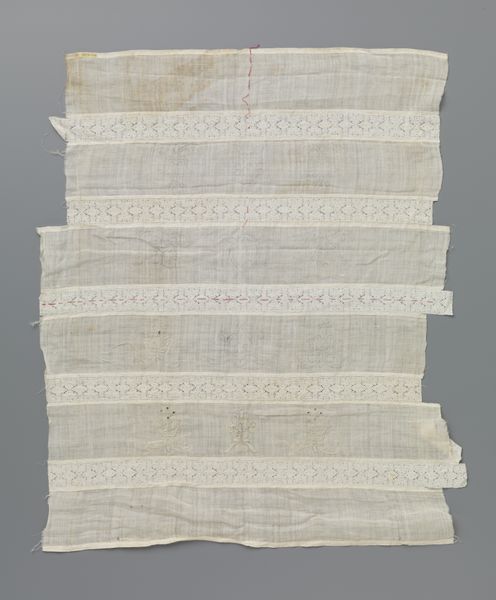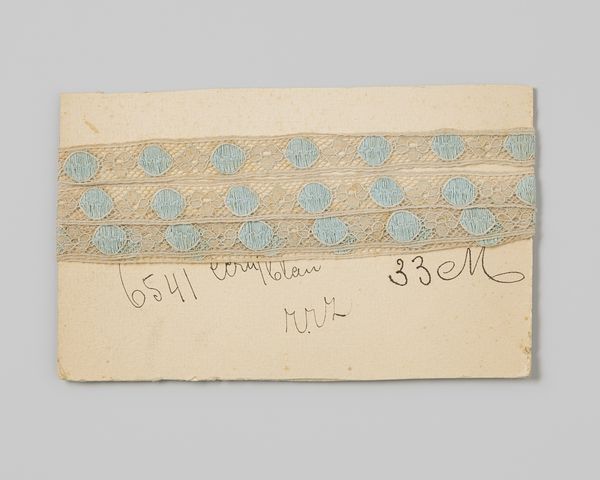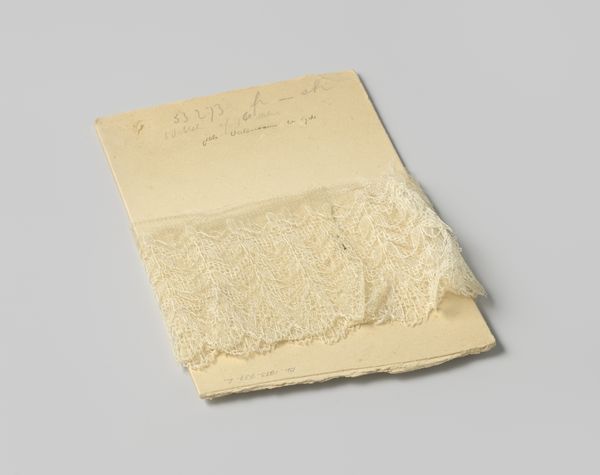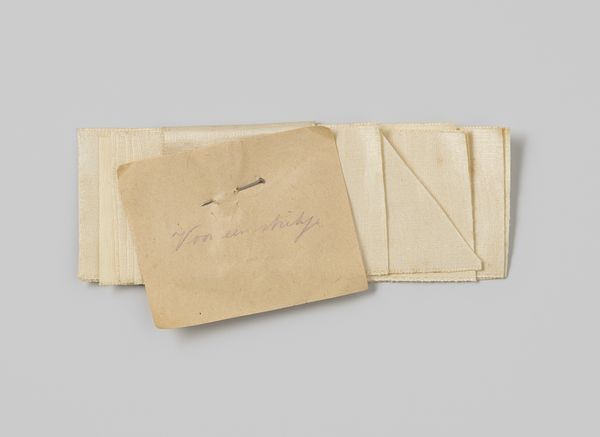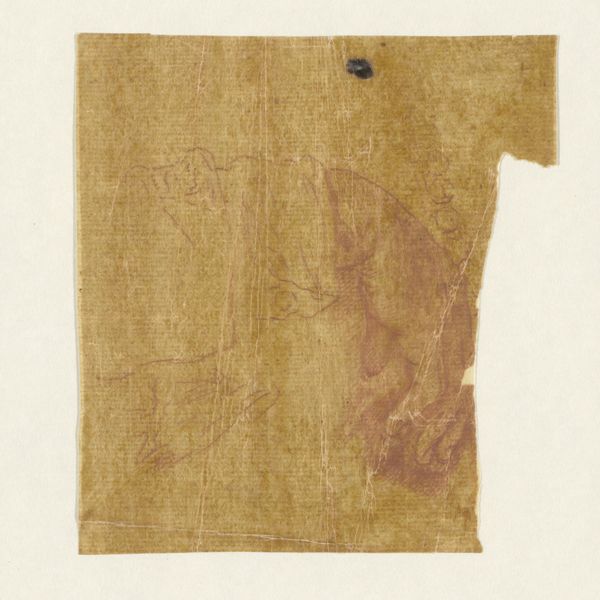
fibre-art, weaving, textile
#
fibre-art
#
weaving
#
textile
#
decorative-art
Dimensions: width 4 cm, length 21 cm, width 16 cm
Copyright: Rijks Museum: Open Domain
This is a length of white lace with a continuous floral pattern, likely made in the Netherlands, though its date of creation is unknown. It is an exquisite example of a craft that was once highly valued and widely practiced. Lace making, deeply woven into European social history, was more than just a decorative art; it was an economic force, a symbol of status, and a means of female empowerment, though not without its contradictions. By the nineteenth century, lace had become a staple in bourgeois fashion, reflecting a society increasingly obsessed with ornamentation and display. The Industrial Revolution brought machine-made lace, challenging traditional artisans like Gustav Schnitzler, whose identity remains elusive. The preservation of lace in museum collections like the Rijksmuseum tells a story of shifting values, from functional commodity to treasured artifact. To truly understand this lace, one must delve into archives, fashion plates, and economic histories, recognizing that its beauty is inseparable from the complex social forces that shaped its creation and consumption.
Comments
No comments
Be the first to comment and join the conversation on the ultimate creative platform.

